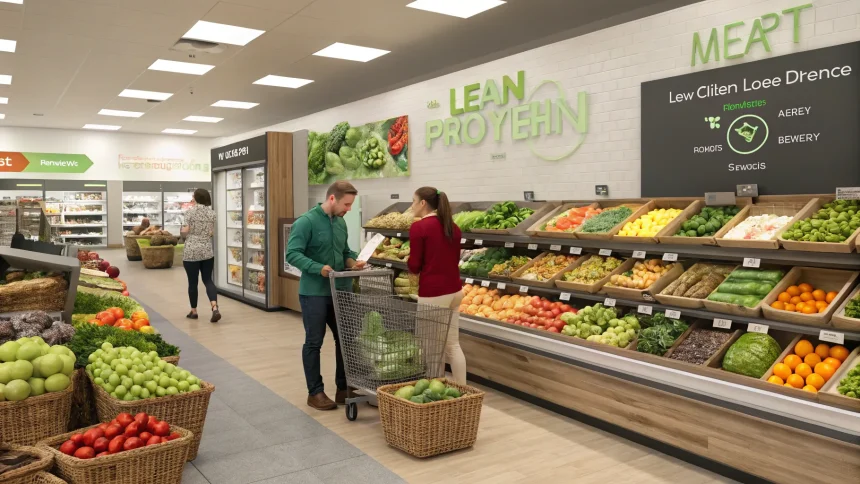As household budgets tighten and health goals rise, companies across food, retail, and restaurants are hearing a clear message. The push is for lower prices and lighter calories. The shift is already shaping shelves, menus, and marketing plans nationwide.
Executives describe a consumer who wants value without giving up wellness. That tension is visible in store brands, portion sizes, and nutrition labels. It is changing how products are made and how they are sold.
“Customers want to cut costs and watch their weight.”
That line has become a common refrain across quarterly calls and store visits. It sums up a new set of trade-offs after years of food inflation and a wave of weight-loss interest, from high-protein snacks to new medications.
Why wallets and waistlines now move together
Food inflation spiked in recent years and then eased, but shoppers remain price sensitive. Many are trading down to private labels and value packs. At the same time, interest in weight management is strong, fueled by calorie tracking, high-fiber diets, and broader awareness of metabolic health.
Weight-loss drugs have also entered the discussion. While only a slice of the market uses them, their visibility has influenced eating habits. Restaurants report more requests for smaller portions, protein swaps, and lower-sugar options.
Analysts say the crossover is clear. Consumers want savings that align with health goals. They are looking for fewer impulse items, more meal planning, and basic ingredients that fit simple, lower-calorie recipes.
How retailers and brands are adapting
Grocers are expanding store-brand lines with nutrition cues, such as high-protein yogurts and reduced-sugar cereals. Clear front-of-pack labels help shoppers compare calories and price per serving in seconds. Value still matters, but so does an easy read on nutrition.
Manufacturers are revisiting recipes. Some are lowering sugar and saturated fat. Others are offering multipacks with smaller portions. The goal is to keep price points stable while addressing calorie concerns.
- More private label options with simple nutrition claims
- Smaller pack sizes to control calories and spending
- Menu “light” swaps and build-your-own bowls
- Transparent price-per-serving and calorie counts
Restaurants seek value without bloat
Chains are piloting lean bundles that pair a protein, a side, and a zero-calorie drink at a fixed price. Some are adding half portions of popular dishes. Others highlight baked, grilled, and veggie-forward items rather than fried add-ons.
Operators say the sweet spot is “value-per-calorie.” A meal needs to feel filling and affordable without tipping into excess. Kids’ menus are part of the rethink, with fruit swaps and water defaults gaining traction.
Risks, trade-offs, and the transparency test
There are limits to cost cutting. Shrinkflation has made shoppers wary. If a smaller pack gets a higher unit price, trust takes a hit. The same goes for “health halos” that mask high sodium or low protein.
Experts warn that reformulation must protect taste and satiety. If lower sugar leads to more snacking later, the customer loses twice. Brands that keep protein levels steady and calories clear tend to win repeat business.
Signals to watch in the months ahead
Watch private label share in center-store categories like snacks and cereal. Growth here would signal a durable value shift. Also track the mix of portion sizes in frozen meals and beverages. Smaller formats with stable unit prices suggest a balance between savings and intake control.
Restaurant traffic on weeknights is another metric. Deals that pair light items with clear pricing could pull budget diners back. Finally, expect more digital tools that bundle coupons with nutrition filters. Shoppers want both in one place.
The message is direct and actionable. Price still drives decisions, but health is no longer an add-on. Companies that make it easy to save money and cut calories are set to gain. The next phase will reward clear labels, honest portions, and meals that feel good for both the wallet and the waist.







